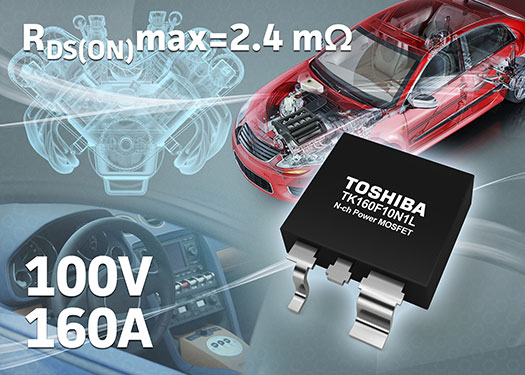- General Top
- SEMICONDUCTOR
- STORAGE
- COMPANY
-
My ToshibaSemicon
- Semiconductor Top
-
ApplicationsAutomotive
Body Electronics
xEV
In-Vehicle Infotainment
Advanced Driver-Assistance Systems (ADAS)
Chassis
IndustrialInfrastructure
BEMS/HEMS
Factory Automation
Commercial Equipment
Consumer/PersonalIoT Equipment
Healthcare
Wearable Device
Mobile
Computer Peripherals
-
ProductsAutomotive Devices
Discrete Semiconductor
Diodes
Transistors
Logic ICs
Analog Devices
Digital Devices
Wireless Devices
※
: Products list (parametric search)
Power SemiconductorsSiC Power Devices
※
: Products list (parametric search)
Isolators/Solid State RelaysPhotocouplers
Digital Isolators
Solid State Relays
Fiber Optic Transmitting Modules
※
: Products list (parametric search)
MOSFETsIGBTs/IEGTsBipolar Transistors※
: Products list (parametric search)
Diodes※
: Products list (parametric search)
MicrocontrollersMotor Driver ICsIntelligent Power ICs※
: Products list (parametric search)
Power Management ICsLinear ICs※
: Products list (parametric search)
General Purpose Logic ICsLinear Image SensorsOther Product ICsOther Product ICs
※
: Products list (parametric search)
-
Design & Development
Design & Development
Innovation Centre
At the Toshiba Innovation Centre we constantly strive to inspire you with our technologies and solutions. Discover how to place us at the heart of your innovations.
-
Knowledge
Knowledge
Highlighted Topics
Further Materials
Other
- Where To Buy
- Part Number & Keyword Search
- Cross Reference Search
- Parametric Search
- Stock Check & Purchase
This webpage doesn't work with Internet Explorer. Please use the latest version of Google Chrome, Microsoft Edge, Mozilla Firefox or Safari.
require 3 characters or more. Search for multiple part numbers fromhere.
The information presented in this cross reference is based on TOSHIBA's selection criteria and should be treated as a suggestion only. Please carefully review the latest versions of all relevant information on the TOSHIBA products, including without limitation data sheets and validate all operating parameters of the TOSHIBA products to ensure that the suggested TOSHIBA products are truly compatible with your design and application.Please note that this cross reference is based on TOSHIBA's estimate of compatibility with other manufacturers' products, based on other manufacturers' published data, at the time the data was collected.TOSHIBA is not responsible for any incorrect or incomplete information. Information is subject to change at any time without notice.
require 3 characters or more.
MOSFETS: Improving power switching, reducing noise

Alongside efficiency, thermal management and size, designers of power conversion applications need to consider switching speeds and EMI-related noise. The good news is that the latest MOSFET technologies not only reduce power consumption and heat dissipation – they also contribute to enhanced switching performance and reduced noise.
MOSFETs based on Toshiba’s latest UMOS VIII-H trench process, for example, offer excellent switching ripple suppression capability, which helps designers to reduce overall EMI noise. Target applications for the new MOSFET technology include automotive motors in 48V systems, DC-DC converters and load switches.
The new MOSFETs delivers a much tighter threshold voltage (Vth) specification – a very important consideration for switching applications - than previous devices. Tighter Vth specification can contribute to a dead time reduction in half-/H-/B6-bridge schemes. This is because the max Vth difference between low-side MOSFET and high-side MOSFET is smaller.
In applications where MOSFETs are connected in parallel, a tighter Vth spec leads to improved synchronous switching among paralleled MOSFETs. As a result, the switching loss will be distributed more evenly among the MOSFETs.
Toshiba's white paper on the latest silicon and package advances for power MOSFETs provides more information on the capabilities of these new technologies.
Click here…

